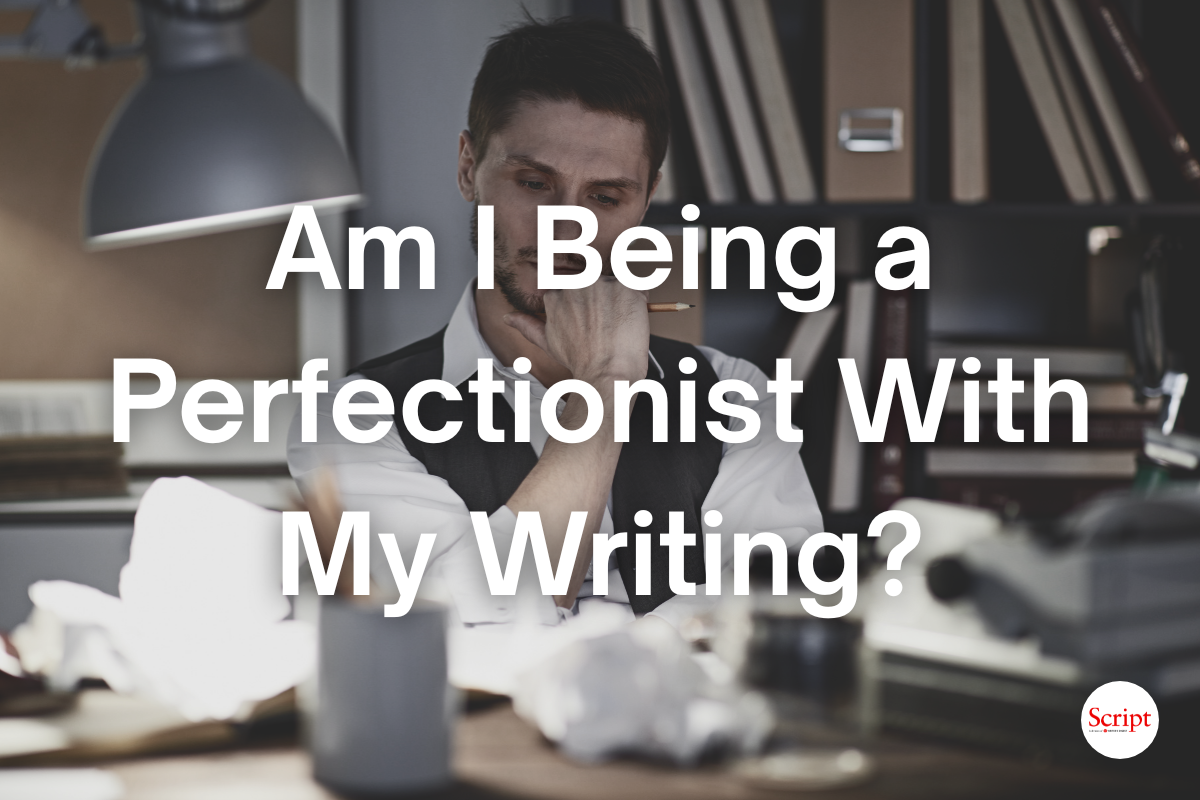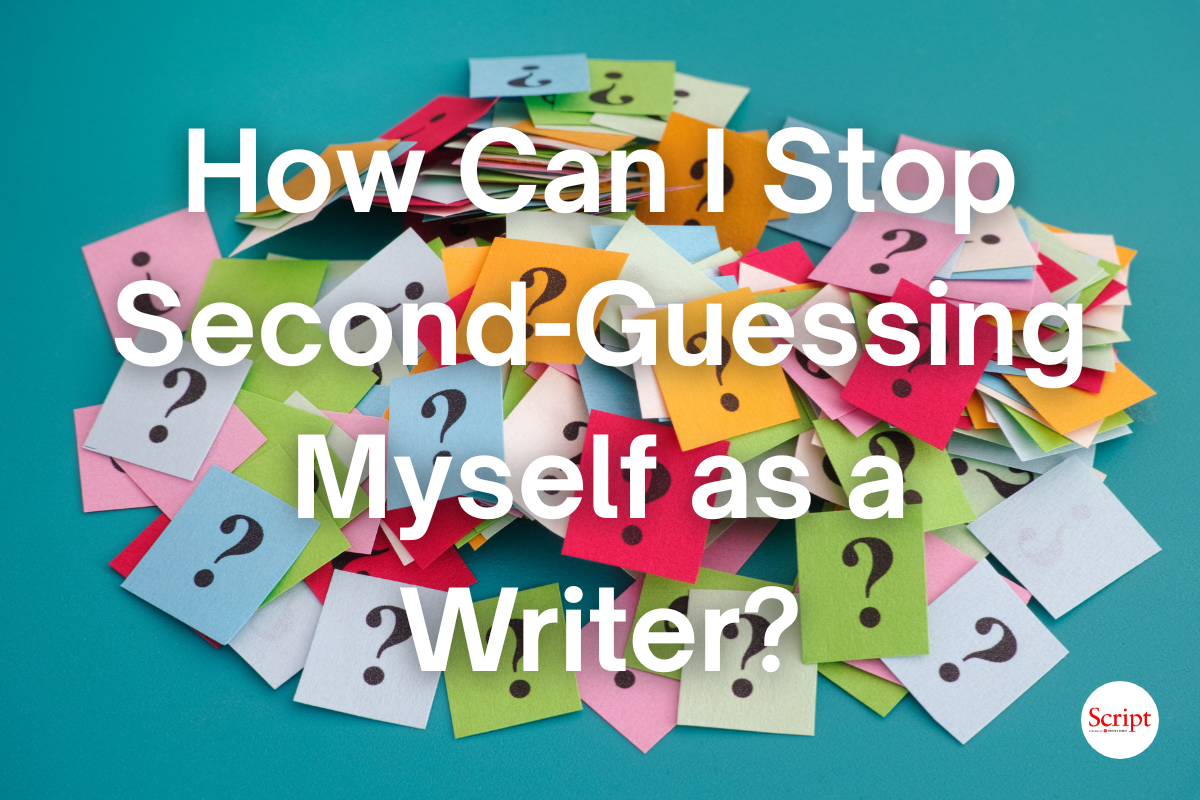Finding the Line with Scene Descriptions
In this installment of “Ask the Coach,” Jenna Avery answers two questions about writing scene descriptions and where to draw the line between too much and just right.
Welcome to the next installment of “Ask the Coach.” As a writing coach, I answer questions from writers about making the work of writing happen, tackling craft, business, and personal questions along the way. (Have a question you’d like answered? Check the details at the end of the article about how to submit one.)
In today's article, I'm addressing two questions about writing scene descriptions, including seeing it as an opportunity for your voice to shine, and where to draw the line with what to include and what to leave out.
Two Questions About Writing Scene Descriptions
Here’s our first reader question about how much is too much:
“You see lots of advice these days about how screenplays aren't novels, which I understand and agree with, thus scene descriptions need to be visual and filmic. Yet some of the better screenplays I've seen and read have some literary quality to them (a metaphor, analogy, something beyond basic image).... My question: Is it OK to have somewhat literary scene descriptions as long as they don't become blocks of Dostoyevskian text and are more visual than cerebral? As long as the [scene descriptions] advance down the page and leave a decent amount of white space? (ex. Red velvet chairs spread across the room like random shipwrecks.)
Here’s the second and related question along the same lines:
“Where is the line drawn when writing your scene descriptions and you want to write what is going on in the scene versus writing a play-by-play of every action, emotion, and thought your character(s) has?”
Where to Draw the Line with Scene Description
Let's jump into exploring some possibilities when writing scene descriptions, including page layout or design, your voice as a writer, handling thoughts and emotions, and how much to include in a scene.
Scene descriptions can be a delightful way to design your pages.
Scene description writing is one of my true delights in screenwriting. There’s such a joyful, sweet spot to be found in the optimal amount of brevity, vividness, and character action and reaction, all while designing how the words lay out on the page with a generous sense of openness — “negative space” or “white space” — around the text to increase readability, establish pacing, and effortlessly pull the reader forward.
One valuable rule of thumb I’ve picked up from screenwriter Jeff Howard is to use a new line for every action. In other words, start a new line of scene description text when something new is happening. This opens up the page even more.
The way your pages appear is also one of your first introductions to your reader (Jeff Howard speaks about this too). When a reader opens your script and sees a page filled with big blocks of description, it’s not likely to feel enticing to read. How your text looks on the page matters. So, yes, leave space, and yes, don't write in big blocks of text.
Scene descriptions are a place where your voice gets to shine.
And, scene descriptions are a place where your voice as a writer can truly shine.
If you write in a literary style, yes, use metaphor, analogy, and literary qualities to entertain and charm your reader. You are part of the package, so being yourself on the page is part of what sells you as the writer.
You may also want to consider how well the style matches both your genre and tone. An action film will probably feel far less literary than a historical period piece, for example.
Having said this, I’d still steer toward writing at an accessible level that most readers can understand rather than straying into overly florid or complex writing — just as with the design of the page, the writing should engross the reader and keep them moving forward. At the same time, don't stifle yourself. It's a balancing act, to be sure.
Include thoughts and emotions in scene descriptions sparingly.
While we’re often told by the screenwriting gurus and advice givers out there not to include anything on the page we can’t see on the screen — “thoughts,” for example — I believe we can sparingly (though perhaps not lavishly) describe thoughts alongside emotion, action, and reaction to convey how our characters are feeling and interacting with each other.
Experiencing a movie or TV episode is all about the emotional journey of the character and the emotional journey the audience takes alongside that character, after all. So include what you need to fully create that experience.
This doesn't mean we should include every thought or emotion — but that we can include key reactions to establish our character's personalities, for example, or critical emotional moments and plot points.
Focus on what's truly important to the story when writing descriptions.
Rather than trying to include “everything,” aka the “play-by-play” of every single thing happening in a scene, aim to focus on the truly important events and information and leave the rest out.
What's critical that you're conveying in the scene? What’s the most effective way you can get that across? How are the characters interacting, acting, and reacting? You don’t need to share every single detail. Instead, think of each word, phrase, or sentence you craft as needing to earn its keep, maybe even playing double duty.
As the screenwriter, you get to make the call between what your reader needs to know to follow the scene and story, versus what will lose them with overly detailed or even boring exposition that bogs the flow of story down. You may find you want to stay a little longer in the emotional moments and spend less time in the more mundane aspects of the story. Pay attention, read your work as if you were reading with fresh eyes, and trust your gut about how it lands.
That’s a Wrap
There’s so much screenwriting advice out there, and every time I turn around there’s someone advising writers to “never” do this, and “always” do that, but to me, all story choices come down to this: What do you need to do as a writer to tell this story in the most effective, meaningful, powerful way you can? Yes, there are industry standards. And, you can do a lot of creative coloring even inside those lines.
Writing scene descriptions offers a unique opportunity for screenwriters to feature their voice, style, and creativity. Allow it to come through with all the choices you make, while striking the balance between creating the blueprint for the visual, cinematic world of your story, keeping your writing open and flowing on the page, and giving your readers and audience insights into the depths of your characters and the critical information they need to follow the story.
Thank you both for your questions and happy writing.
Screenwriters, what challenges do you run into that you'd love to see us address in our articles? Take our short survey here.
Submit your question to be answered anonymously via my online form here or email directly to askthecoach@calledtowrite.com. Look for answers to selected questions in my monthly “Ask the Coach” column on the third Thursday of the month. And reach out to me on Twitter to share your thoughts: @JennaAvery.







